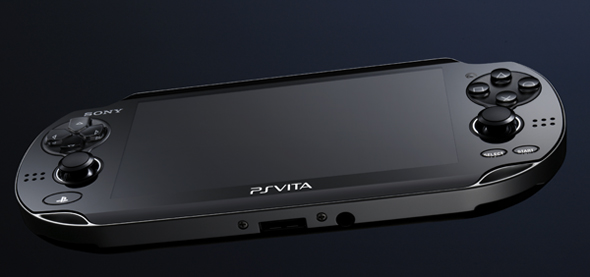
The PlayStation Vita is a workhorse, but its hefty price tag means more casual handheld gamers may want to wait for the cost to come down.
Based on my first few hours, Sony’s new PlayStation Vita hand-held gaming system is a well-built workhorse of a machine. Its massive touchscreen and two thumbsticks, a first for a gaming handheld, allow for console-style gaming on a portable device with no compromises. Like its predecessor, the PlayStation Portable, the Vita feels like a serious, state-of-the-art gaming device for grown-ups.
That said, the Vita is also a device in search of an audience. It’s pricey, starting at $250, plus another $20 to $100 for the memory card you’ll need to store data. If you shell out $300 for the more expensive, 3G-enabled model, you’ll need to pay another $15 or $30 a month for a data plan from AT&T.
In addition to the hefty price, the Vita duplicates the functionality of smartphones. When it comes to watching movies, the Vita is more comfortable to hold than my Samsung Galaxy SII Android phone, but it’s much bulkier, and its screen size of 5 inches isn’t that much larger than the Galaxy’s 4.3-inch screen. (The iPhone 4S, by comparison, sports a 3.5-inch screen.)
Like most smartphone users, I carry my phone, which has better battery life than the Vita, everywhere I go. It makes more sense to keep my music stored there. The two cameras on the Vita are nice for playing augmented-reality-style games, which incorporate real-world objects into gameplay. For taking pictures, though, they don’t rate with what most of us have on our smartphones.
That said, if you game on the go a lot — whether it’s on commutes into San Francisco, on business trips or staffing a desk during the graveyard shift — the Vita is an enticing buy. The inclusion of two thumbsticks, as opposed to the one found on the 3DS or PSP, finally makes playing modern adventure and first-person shooter games comfortable on a handheld. No longer will developers have to gin up goofy control schemes like using the four face buttons to let players look around a 3-D environment.
Using the responsive 5-inch touch screen to navigate through menus or move characters through two-dimensional planes is a snap, even if the touchpad on the rear of the Vita isn’t always well-implemented.
The Vita’s online and social functionality feels like a leap forward in the world of handhelds in much the same way the revamped Xbox Live blew gamers’ minds when the Xbox 360 launched in 2005. For the first time on a piece of Sony hardware, you can voice-chat with your friends while you’re playing different games. An included application called Near lets you network with gamers in your rough geographical area for competitive gaming or to leave virtual presents for one another. (It’s worth mentioning, however, that since signing up for Near, I’ve received about one message a day that appears to be spam, a problem that’s likely to grow along with the Vita’s user base, if Near and the spam are connected.)
It’s also important not to overlook the Vita’s long-term potential, as the device’s always-online nature, particularly for 3G users, will let Sony improve its online offerings through downloadable updates. In much the same way the Xbox 360 has added streaming video, social networking apps, group chats, voice navigation and other features over the years, the Vita of three years from now could look like an entirely different animal, technology-wise.
And then, of course, there are the games. I’m working my way through a pile of launch titles and will follow up next week, but the Vita’s initial game lineup is strong as far as such things go. Ubisoft’s “Rayman Origins” and “Lumines: Electronic Symphony” lead the pack with critics. New “Uncharted” and “ModNation Racers” titles from Sony are solid entries, and if I were a big handheld player, the “MLB: The Show” game launching soon would be on my shopping list. Compared with the 3DS’ slim launch pickings, the Vita’s launch is an unqualified success.
That said, there’s no getting around the price. Like the Vita, the 3DS launched at $250, but it didn’t start to move at retail until Nintendo dropped the price to $180. The Vita’s retail games, while admittedly deeper, more engaging experiences than what you can get on a tablet or smartphone, sell for several times what you’d pay for premium iOS or Android apps like “Dead Space” or “Civilization Revolution.”
As someone who generally only plays handhelds on vacations or when the power goes out, I’d be unlikely to pick up a Vita at retail until the price hit about $170, the same price that enticed me to pick up the PSP I mainly play when I go on vacation. Even that’s assuming I could find a good deal on the spendy memory card. For this column, I played a 3G-enabled review unit on loan from Sony. My reviewer’s kit included several launch titles and codes to download items from the PlayStation Store. I’ll write more in-depth about software soon.



